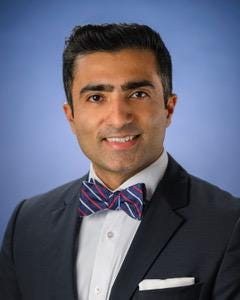Life and death along the path of active surveillance: Reminder high-risk PCa can lurk behind 'benign' diagnosis
Challenges of balancing the risks of overdiagnosing and underdiagnosing prostate cancer early enough to intervene and minimize the risk of mortality
By Howard Wolinsky
Rule #1: Bad news: We don’t get out of here alive. Sorry.
Rule #2: Good news: Most—most but not all of of us—with a diagnosis of lower-risk prostate cancer—WILL NOT DIE from prostate cancer. Cardiovascular disease is our real Public Enemy #1, the Dillinger and Capone of public health.
Rule #3: If you have low-risk Gleason 6 prostate cancer, many experts maintain, it will never spread and it will never kill you. But, a big but, you’re not immune from developing more advanced deadly prostate cancers. So keep an eye out.
As a veteran medical writer, I can tell you that following medical science, is like a carnival show featuring the ups and downs of a roller-coaster, occasionally peaceful times on the merry-go-round, and sometimes a Whac-A-Mole arcade game, the situation characterized by a series of futile, Sisyphean tasks, where the successful completion of one just yields another popping up elsewhere.
Sometimes, it’s a pie in the face.
One week as a medical writer, I might have written about how caffeine helped with one disease, and the next week about how it worsened another. condition. A good news-bad news pendulum.
I concluded that for every MD., or PhD, there was an equal or opposite MD, or PhD.
All this brings me to the latest research on Grade Group 1, or Gleason 3+3, low-risk prostate cancer.
I have been part of a group—we call ourselves the Gang of 6— calling for redefinition as a non-cancer of these lesions, the majority of those found in the nearly 300,000 U.S. men who will be diagnosed with prostate cancer in 2024. I’m in this category myself.
My doctors have variously called my single positive core of Gleason 6—observed only once in 2010—as “lame” or “wimpy.” I take that as a compliment.
It’s been easy for me psychologically to live with, but I have encountered “financial toxicity” as a result with seven companies declining a term-insurance application. Just because I have a so-called lame “cancer.”
Others experience emotional distress, which in the extreme potentially can lead a few patients to undergo unnecessary treatment with risks of impotence and incontinence or other symptoms.
(Occasional gentle merry-go-round rides. Then, a deep dip on the r-c.)
Now comes a new German study, which reminds us that even low-risk patients can have high-risk cancers lurking in the background like a ghoul. So this is the bad news swing of the pendulum.
Here’s what investigators found in their analysis of data from 10,228 patients with Gleason Grade Group 1 prostate cancer who underwent radical prostatectomy at University Hospital Hamburg Eppendorf in Germany.
Among these patients, 9,249 were diagnosed based on transrectal ultrasound (TRUS)-guided biopsies, and 980 of them were diagnosed using a more modern approach combining TRUS with magnetic resonance imaging to detect prostate cancer more accurately. The investigators began enrolling patients in February 1992 and continued following them through November 2023 reported:
At least 8% of the patients with a classification of Gleason Grade Group 1 had a more aggressive type of prostate cancer. However, about 6% of the patients with Gleason Grade Group 1 classification who were at highest risk for aggressive prostate cancer had a prostate-specific antigen (PSA) level of 20 ng/mL or higher, and about 12% to 14% of them had more than 50% of their systematic biopsies return a positive result. The patients who had either of these indicators had a significantly elevated risk of adverse pathology, early PSA failure, and mortality.
“Our study identifies two risk factors that help determine which patients with [Gleason Grade Group 1] are at heightened risk of aggressive disease and death,” said senior study author Anthony D’Amico, MD, PhD, of the Department of Radiation Oncology at Brigham and Women’s Hospital and a founding member of the Mass General Brigham health-care system.
“For patients with [Gleason Grade Group 1 classification] who are at heightened risk, we should continue to call their diagnosis cancer and we should report it back to their physician so that they can act on this information. For patients with [this classification] who do not have either of these risk factors, the chance of dying is much lower. [F]or [physicians] caring for patients at greatest risk, our message is clear: call it cancer, and look harder,” he emphasized.
Seems reasonable to maintain vigilance with surveillance and to look harder. And talk with your doctors.
D’Amico added: “Physicians and patients can have an informed discussion about whether observation, active surveillance, or treatment is the right approach, but if all patients with [Gleason Grade Group 1 classification] are labeled ‘benign,’ it may preclude those conversations from happening.”
Sidenote: Germany does not have the greatest record of surveillance, anyway. I was a co-author of a survey, supposedly the largest ever undertaken of prostate cancer patients. Nearly 16,000 patients were involved from Germany, U.S., and U.K. A higher proportion of patients was on active surveillance in the UK (11.5%) than in Germany (5.7%) and the USA (7.4%).
Co-researchers shared data and I noticed there were none on AS. Turns out that they had covered AS, and added the data at my request. It changed the findings. So researchers, don’t forget AS patients.
Article on a rare (and famous) patient whose cancer “left the barn.”
AS pioneers decode famed researcher's PCa scare, declare Active Surveillance safe option
(Drs. Laurence Klotz (above) and Peter Carroll, AS pioneers, find NIH’s Collins an outlier.) By Howard Wolinsky Francis Collins, MD, PhD, is one of the most prominent physician-scientists in the world. He led the Human Genome Project to map human DNA and later served as director of the National Institutes of Health, one of the top research institutions in…
ASPI webinar on 2nd opinions. My opinion? I’m going, why not join us?
By Howard Wolinsky
Active Surveillance Patients International (ASPI) is holding a patient webinar at noon EST on Saturday, July 27, called “In our opinion, get a second opinion.” Register here: https://zoom.us/meeting/register/tJUkdOqpqT0iGNHcOP4sfLoiIsdIp-nLwbUS
Four patients will share their experiences with prostate cancer and how second opinions—or their absence—had a huge impact on a patient’s fate.
I will be on the panel along with my Chicago area friends, retired attorney Jim Schraidt, a former ASPI board member and current ZERO board member, who like me was diagnosed in 2010 but went on a different path that transformed him into patient advocate supreme for Active Surveillance, and newly diagnosed PCa patients Charles Brown III and Keith Day, whose second opinions saved them from the robo knife and the ray gun.
Please answer a brief survey on AI and urology
Peter Evancho, an attorney and second-year medical student at the University of Maryland, Baltimore, is conducting a policy analysis about AI and urology and is asking for our help.
Can you take a few minutes and answer Evancho’s survey and share your thoughts about AI and urology care?
Here’s what Evancho has to say about himself and his survey:
“My name is Peter Evancho, and I am a second-year medical student at the University of Maryland School of Medicine. In conjunction with the Department of Surgery and the Division of Urology at the University of Maryland Medical Center and Principal Investigator Minhaj Siddiqui, MD, I am conducting a short survey to examine the the integration of artificial intelligence (AI) into urologic practice and understand both its promising advancements and the substantial ethical, legal, and regulatory challenges it poses. Your insights are crucial, and the survey is designed to be completely anonymous. Participation is voluntary.”
Survey Link: https://rs.igs.umaryland.edu/surveys/?s=3R37KJMPERYEWMH9
The survey will remain open until September 1, 2024. The University of Maryland, Baltimore’s Institutional Review Board has approved this study under HP-00109759
From a reinstated subscriber
A subscriber quit because he expected special content. I totally understand. I explained that I was trying to stave off red ink and that I shared what I write whether people pay or don’t. I am trying to help—and not go broke.
The subscriber changed his mind. Here’s what he said:
You do great work, and I enjoy your frankness of communicating your experiences, and also providing news on this developing assessment and treatment of this disease.
I'm also 3+3, diagnosed October 2022, and your perspectives have helped my mindset and allowed me to interpret and lead my communications with my urologist.
I'll reinstate my subscription.
Thanks. May your tribe increase.
Micro-ultrasound webinar
By Howard Wolinsky
Micro-ultrasound is an amazing tech that is catching on slowly and may be giving MRI a run for the diagnostic market.
Dr. Ravi Kumar, a urological oncologist on staff at Humber River Hospital in Toronto, is making a presentation on the status of micro-ultrasound, “ExactVu Micro-Ultrasound: A new frontier in urological imaging” at 7-9 PM EST Wednesday, July 24. Register here: https://conta.cc/4co75TY Prostate Cancer Support Toronto is sponsoring the meeting.
(Dr. Ravi Kumar)
Humber River Hospital is North America’s first fully digital hospital, using the latest tech to enhance all aspects of quality patient care delivery, improving efficiency, accuracy, reliability and safety.
ZERO needs your help in Congress funding CDC on PCa issues
By Howard Wolinsky
The House Appropriations Committee has made significant cuts for Fiscal Year 2025 to the Centers for Disease Control and Prevention (CDC), nearly a quarter of its funding.
Among other things, the CDC supports a number of prostate cancer activities, including outreach into high-risk communities and support for state and local prostate cancer programs, all of which are at-risk for large cuts.
I have some skin in this game. I helped win a $1 million grant from CDC—the first of its kind—to study opinions about Gleason 6 (Grade Group 1) in African AMerican and Hispanic men.
Zero said: “Your elected officials need to hear from you - these programs are critical for improving prostate cancer outcomes and saving lives.
”The Senate is next to weigh in on funding for CDC. We can help protect prostate cancer funding by telling Senators that cuts would be devastating for our community.”
Please check in here: https://p2a.co/15HnJhg
Achieving HapPenis after prostate cancer
Prostatectomies are just part of the issue. Just aging impact yor “HapPenis.”
Check out this program from out friends at the Prostate Forum of Orange County:







Having my 2nd biopsy July 31. First one ever was Feb 2021 (TRUS). Talked the doc into letting me do TPUS this time so we’ll see how it goes.